The Object is a new interview series with Scotland-based makers that explores the story behind a singular craft object.
This series offers an insight into each maker’s creative process and the materials, techniques and ideas that make their work unique.
Read more in the series with Keiko Mukaide exploring memories through glass, and jeweller Misun Won on the Korean patchwork inspiration behind her jewellery designs.
In our third instalment for The Object series, bookbinder Tom McEwan tells us about his work on a limited-edition copy of late 20th-century British book designer, John Ryder’s collection of essays “Intimate Leaves from a Designer’s Notebook”.
Discover how Tom created a unique design referencing the process of bookbinding itself, and the techniques he uses in his award-winning work.
Hello Tom, can you tell us a bit more about you and your practice?
I am a design bookbinder working from my studio at WASPS, Irvine Harbour, on the Ayrshire coast. I work to commission or for exhibition on unique, one-off, design bookbindings.
Examples of my work are held in public and private collections in the UK, Europe and USA. I also teach bookbinding from my studio, or as a visiting tutor, as day workshops or as structured courses.
My [book]bindings always relate in some way to the text of the book but may also be further influenced by aspects of the life of the writer (…) background research is often essential.
What is the object you have chosen to talk about?
The object I chose is a binding of John Ryder’s book “Intimate Leaves from a Designer’s Notebook”, bound in 2013.
It uses natural leather, with detailing in coloured silk thread and gold leaf. It was sewn on linen tapes and laced onto laminated and cushioned millboards. Page edges are decorated with gold leaf, transfer print and acrylic inks. The binding measures 250 x 158 x 26mm and is housed in a custom-made, suede-lined drop-back box.
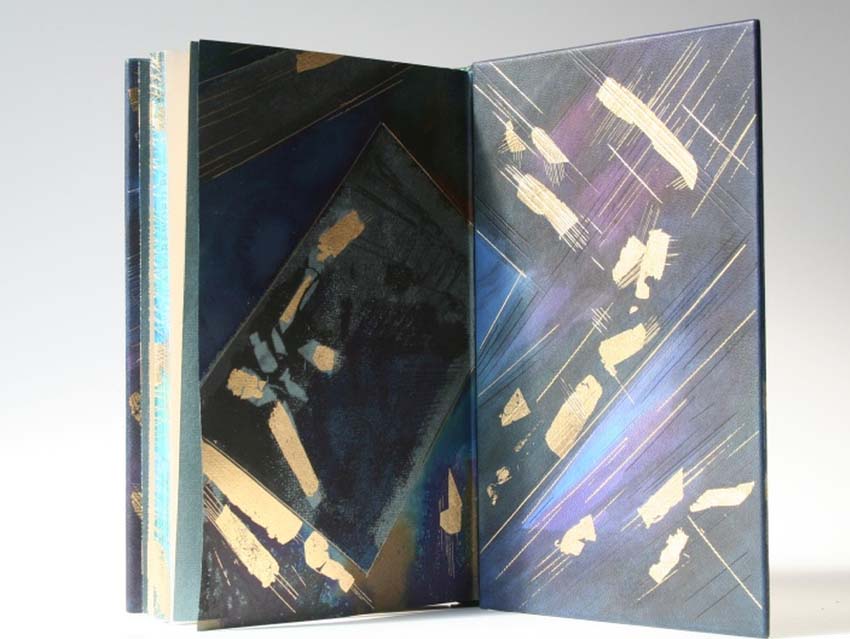
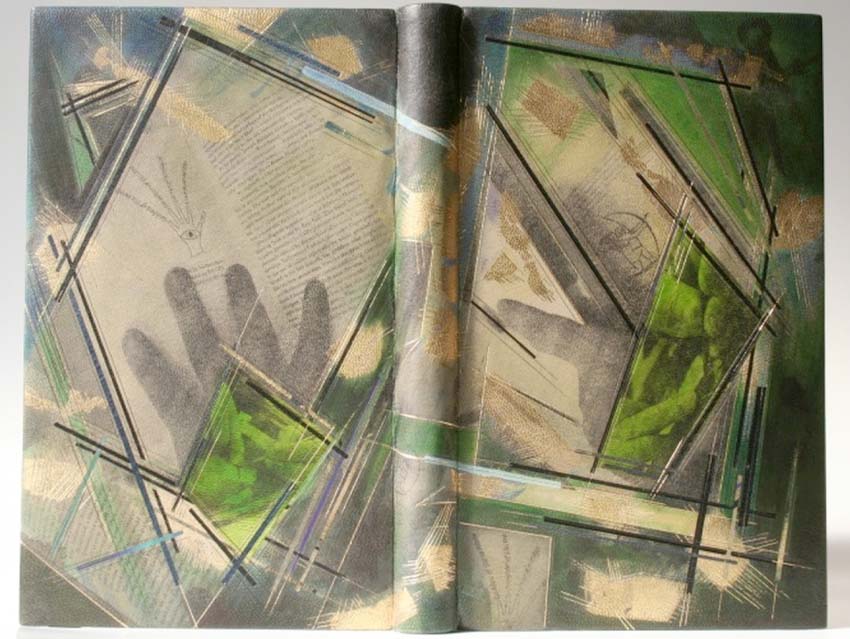 Image: Tom McEwan bookbinding of John Ryders' “Intimate Leaves from a Designer’s Notebook”, 2013 / Photography by the artist
Image: Tom McEwan bookbinding of John Ryders' “Intimate Leaves from a Designer’s Notebook”, 2013 / Photography by the artist
What inspired you to create this binding of John Ryder’s “Intimate Leaves from a Designer’s Notebook”?
This work was a personal project. I have long admired John Ryder’s books and articles – mostly focussed on book design, letterpress printing and typography – and this particular book was beautifully printed by an important private press, Gwasg Gregynog, as a limited edition of 400 in 1993. I acquired the book in printed sheet form (unbound) from the estate of Trevor Jones, who was a highly influential and innovative late 20thCentury design bookbinder, so it already had an existing history and association with fine printing and design bookbinding.
The book also provided a fresh and interesting challenge as it was the first non-fiction text I had worked with.
I took photographs at key stages, and those images provided the source material for the design work applied to the endpapers. (…) [It] proved to be an exciting adventure and the process quickly gained momentum and took on a life of its own.
What is your process and technique, from design to making, when creating a new bookbinding, and did this work differ from this?
My common practice is first to read the book, taking notes that I feel may assist the subsequent design and practical processes.
My bindings always relate in some way to the text of the book but may also be further influenced by aspects of the life of the writer and/or illustrator, the subject matter, historical or political settings, for example. Background research is often essential.
The design process I adopted for this John Ryder’s binding was an unusual one for me, no doubt partly due to the non-fiction and at times technical nature of the book.
The text is a series of studies on illustration, design principles, graphic art, aesthetics, book design, letter form and typography – in short it is very much a “book about books”. With this in mind, I decided to respond in kind and made the “binding about the binding”. For example, when I started to sew the book, I took photographs at key stages, and those images provided the source material for the design work applied to the endpapers.
The completed endpapers were then photographed and became background textures on subsequent inlayed details. The binding also features green tinted panels framing images of my own hands, holding a scalpel, in the process of cutting the recess for an inlay. This image was later transfer-printed to the leather used as the actual inlay; essentially the inlay documents the creation of itself.
This design strategy was not without significant risk as I had little more than a vague notion of what the final object would look like! Nonetheless, it proved to be an exciting adventure and the process quickly gained momentum and took on a life of its own.
Although this particular binding contains a lot of images, I normally work in a more abstract way using a range of stains and dyes in combination with resist and printing techniques. I also use inlay, onlay and scarf jointing structures on most of my bindings, including this one, and this has created a distinctive style. However, I adapt, refine and evolve these techniques continually.
Oddly enough, when I work on a binding I never feel that I’m “designing”; my approach is often much more instinctive. I try to produce bindings which enhance the book and, I hope, express something of what I feel for the book.
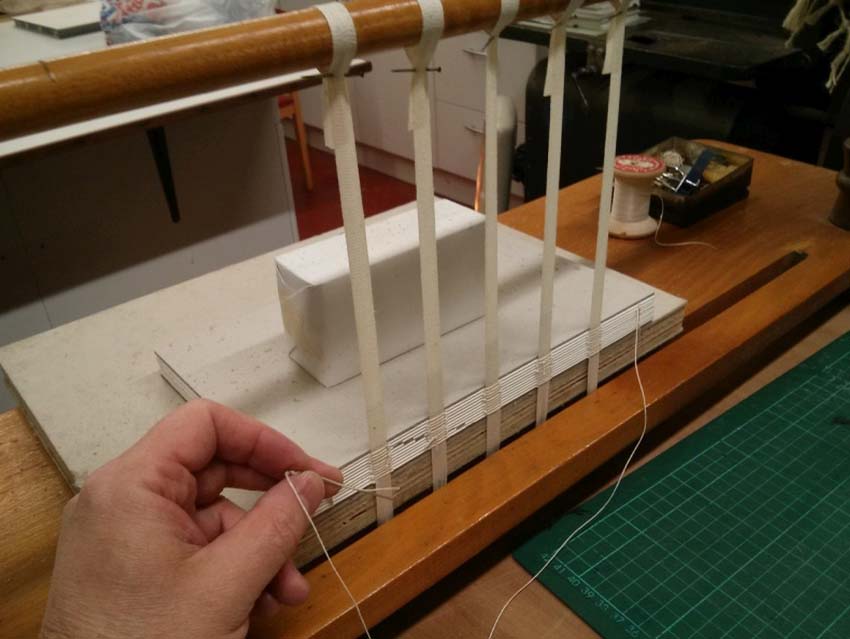
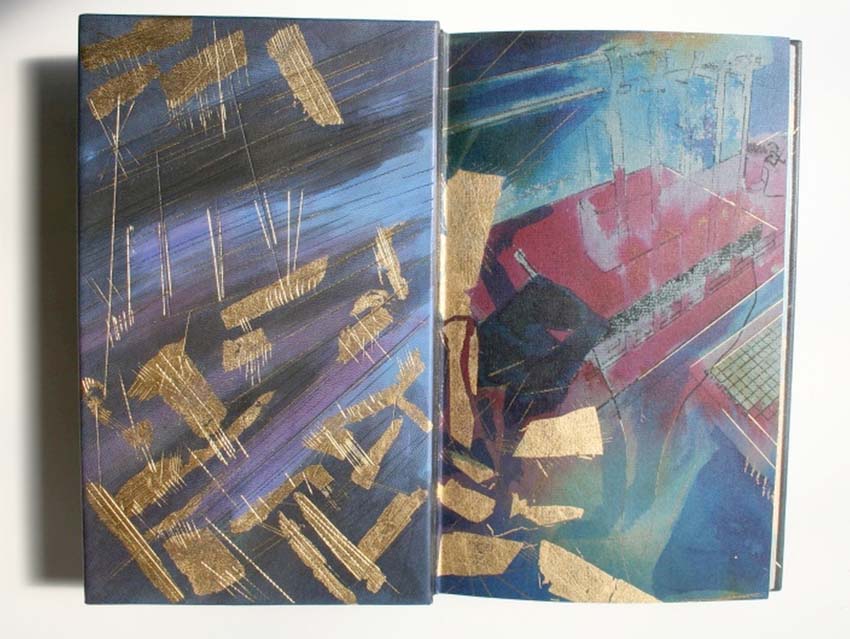 Image: photographic documentation of Tom McEwan at work on the early stages of the bookbinding (top), the same photograph rendered on the final design of the book cover (bottom) / photography by the artist
Image: photographic documentation of Tom McEwan at work on the early stages of the bookbinding (top), the same photograph rendered on the final design of the book cover (bottom) / photography by the artist
Can you tell us more about the materials you used?
The main material is vegetable tanned goatskin. Goatskin is a wonderful – though sometimes testing! – material to work with. It is applied to the book with a liberal application of paste which provides the adhesion but also renders the leather elastic and pliable, allowing it to be shaped and moulded to the contours of the book.
I source the leather in person at the tannery, as we are so fortunate in Scotland to still have a tannery which specialises in fine bookbinding leathers, and carefully select skins with interesting grain/texture and always natural in colour. I then hand-dye the leather at my bindery as the tannery-dyed colour range is rather limited.
There is also generous use of gold leaf on the binding. Gold leaf, again, can be a challenging material to work with but has such distinctive and expressive qualities when combined with leather and paper.
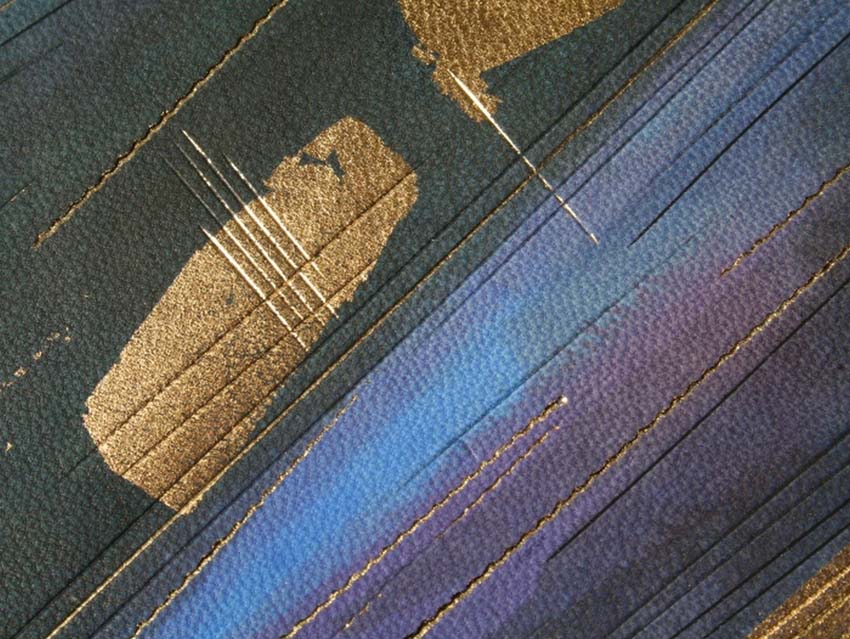 Image: close up of the final book cover / Photography by the artist
Image: close up of the final book cover / Photography by the artist
When creating a new bookbinding, what are specific parameters that you need to consider?
Design bindings tend to be applied to books which already possess significant craft, design, literary and artistic value. Generally, the book will be letterpress printed on a handmade or high-quality, mould-made paper. If illustrations are present, they too will be of a high calibre and hand-printed on fine-papers, typically as woodcuts, etchings, lithographs or photographs.
I’m always aware that the binding is a collaborative extension to this and, ideally, should enrich and complement the craft, design and literary work already present. For me, design bindings should certainly go beyond decoration and/or illustration.
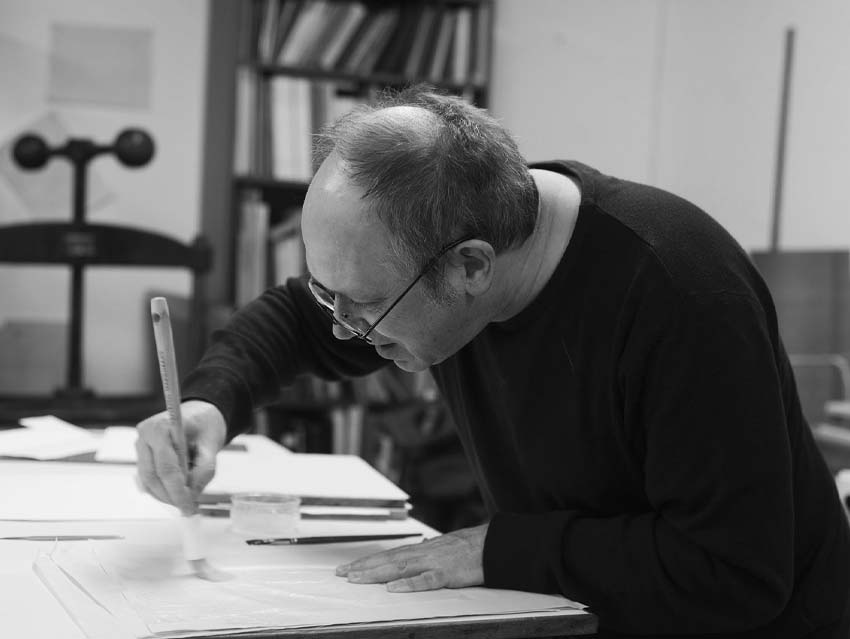 Image: Tom McEwan / Photography by Alex Boyd
Image: Tom McEwan / Photography by Alex Boyd
Where is the book now?
The binding won an award as an entry to an International Bookbinding Competition and is now in a private collection.
Has your relationship with this work on the John Ryder’s bookbinding changed over time?
Not really, but it’s interesting to now look back on this binding and recognise it as a key stage of my work as a design bookbinder.

Tom McEwan works on the Ayrshire coast. Find his work on his website at mcewan.co.uk and on Instagram.
This interview has been lightly edited for clarity.
Read More
-
Full details→
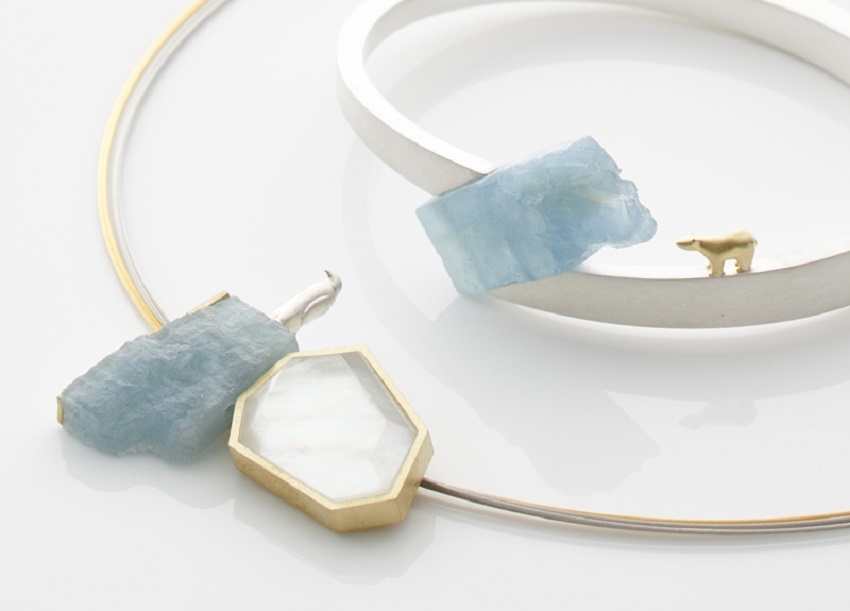
Shopping & Lifestyle Craft for Christmas - 7 handmade gifts for this festive season
We've compiled a collection of seven handmade items from makers and craft destinations across Scotland to inspire you.
4 Dec 2020
-
Full details→
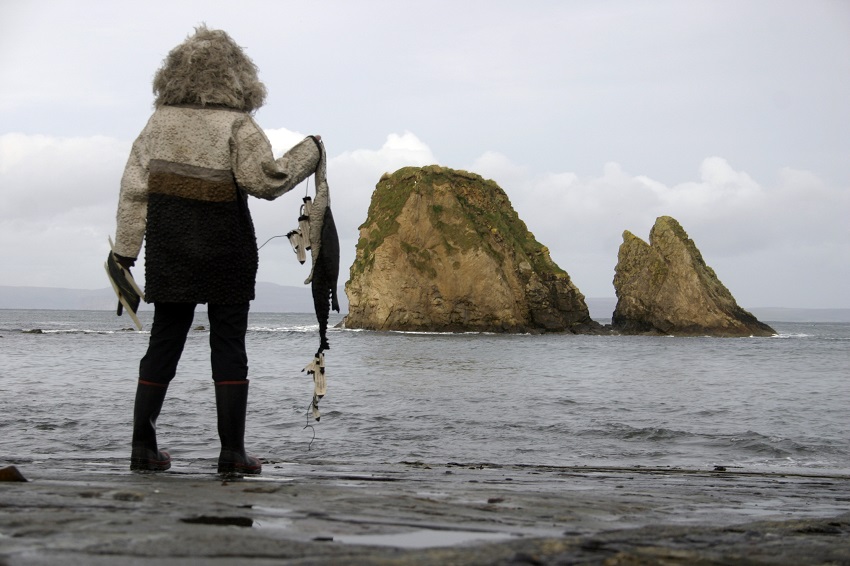
Make It Green How solving a 50 year old mystery resurrected sustainable methods
For our Make It Green, we hear from Joanne B Kaar, a research based visual artists turning traditional craft techniques into an innovative contemporary practice
13 Nov 2020
-
Full details→
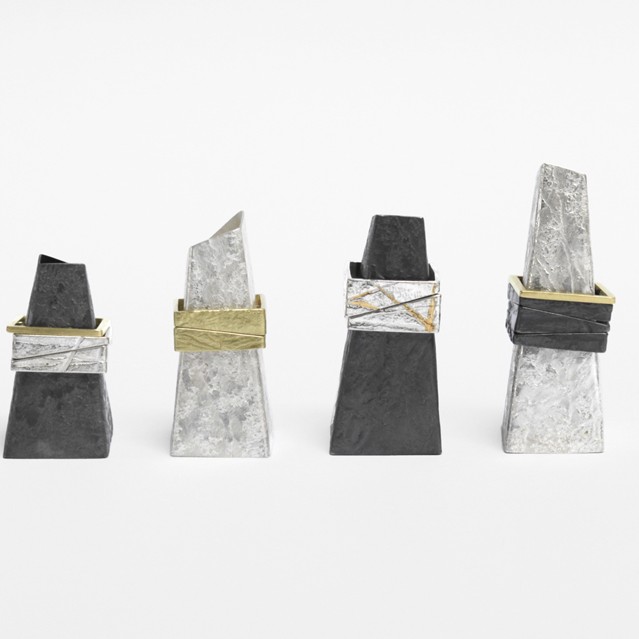
News Defying Expectations at Collect 2020
As we prepare to present a selection of ambitious and elaborate works at Collect 2020, curator Helen Ritchie discusses the eight selected Scotland-based makers combining tradition and innovation to create imaginative objects.
20 Feb 2020
-
Full details→
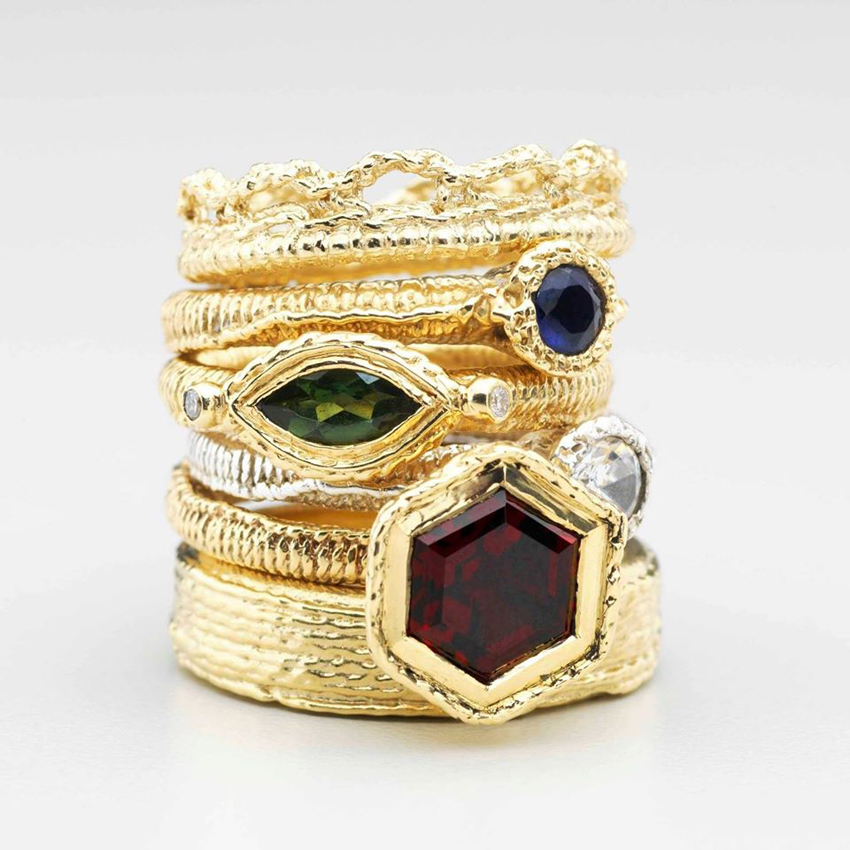
The Craft Edit February 2020
Learn more about the reopening of Aberdeen Art Gallery, a book launch exploring metalwork, and the eight weavers who were awarded for their contributions to Scottish Industry
20 Feb 2020
-
Full details→
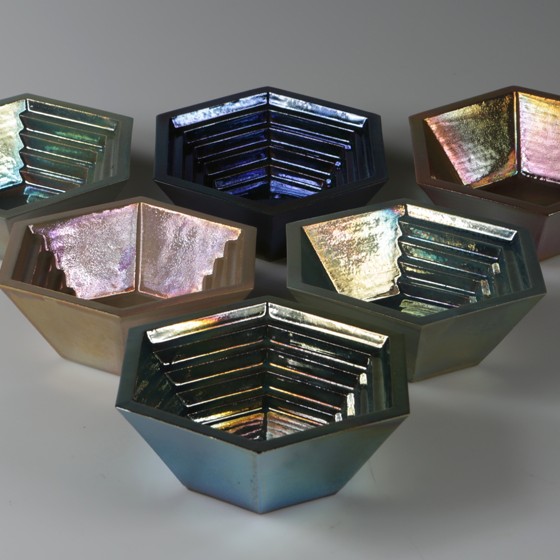
New Talent From seaweed textiles to 3D printing, how young graduates are creating the future of craft.
In the second half of this series, textile designer Jasmine Linington and ceramicist Alison Thyra Grubb talk about sourcing seaweed to produce sustainable textiles, and the relationship between clay and digital printing.
13 Feb 2020
-
Full details→
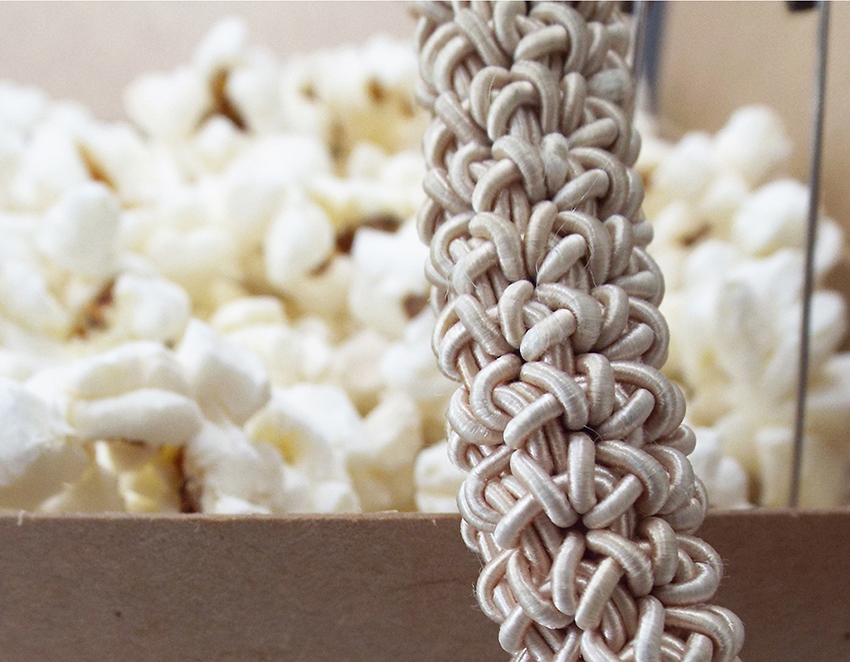
New Talent Degree Shows & Craft Scotland Graduate Award
Degree show season is here! Discover diverse work from emerging talent, including the winners of the Craft Scotland Graduate Award 2019.
17 May 2019
-
Full details→
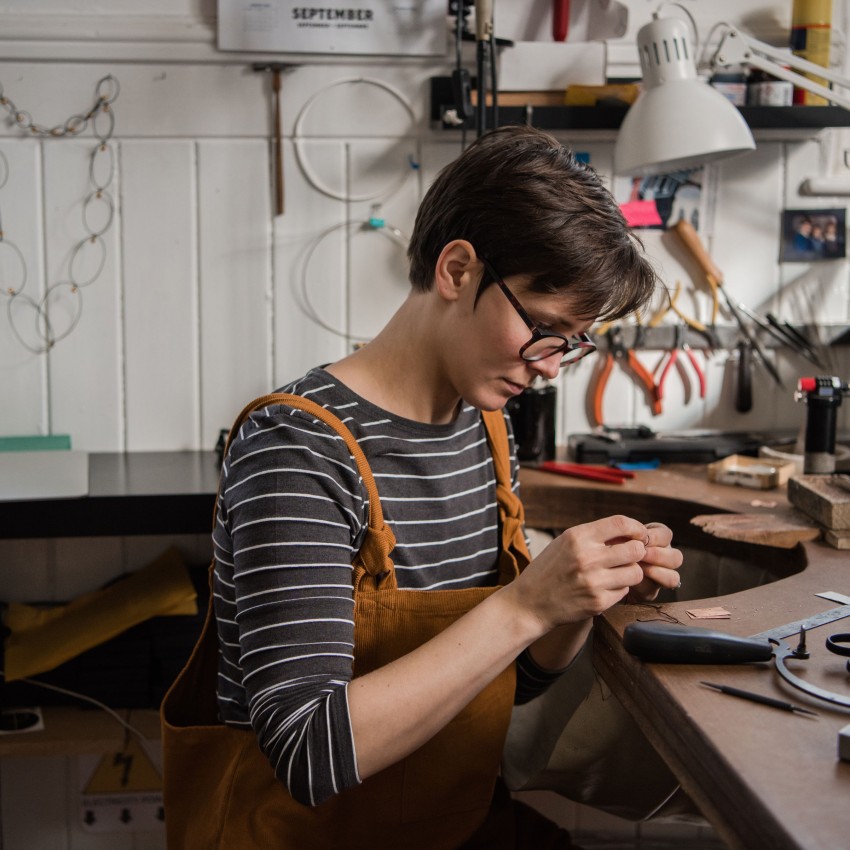
Make Your Own Story Exploring mental health through broken mirrors with Eleanor Kerr-Patton
In our latest edition of Make Your Own Story, we talk with Eleanor Kerr-Patton on how she uses a modern version of the Kintsugi technique to reflect mental ill health.
21 Feb 2019
-
Full details→
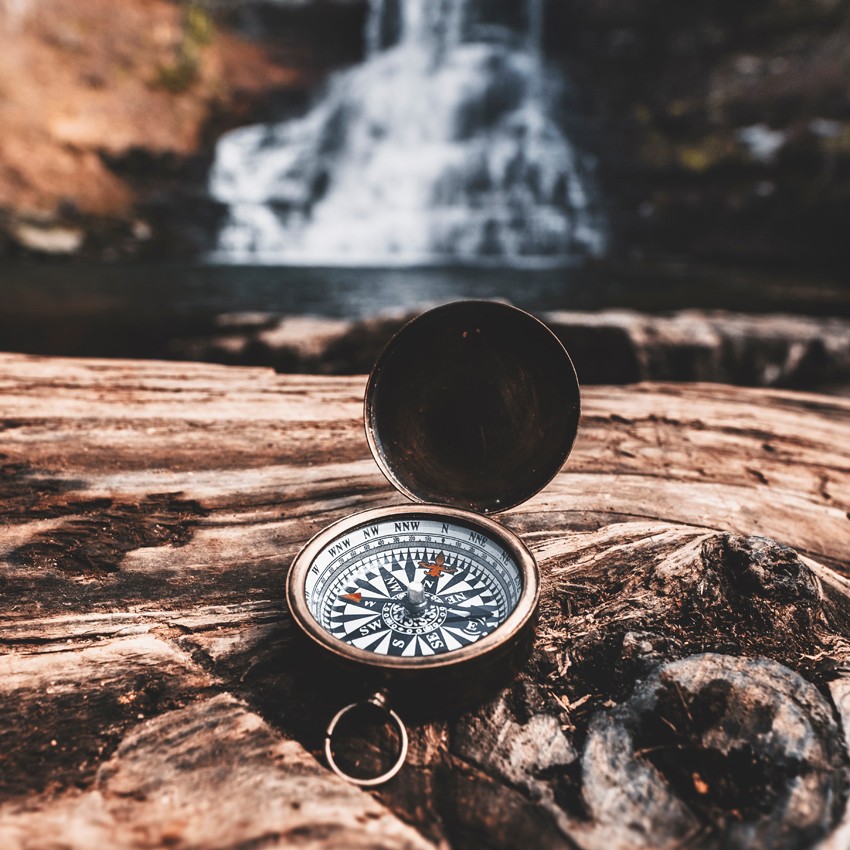
Announcement Compass, our new learning programme launches!
Created specifically for Scotland-based makers, our new learning and development programme is your route to prosperous making.
20 Sep 2018
-
Full details→
![Craft for Christmas - 7 handmade gifts for this festive season]()
Shopping & Lifestyle Craft for Christmas - 7 handmade gifts for this festive season
We've compiled a collection of seven handmade items from makers and craft destinations across Scotland to inspire you.
4 Dec 2020
-
Full details→
![How solving a 50 year old mystery resurrected sustainable methods]()
Make It Green How solving a 50 year old mystery resurrected sustainable methods
For our Make It Green, we hear from Joanne B Kaar, a research based visual artists turning traditional craft techniques into an innovative contemporary practice
13 Nov 2020
-
Full details→
![Defying Expectations at Collect 2020]()
News Defying Expectations at Collect 2020
As we prepare to present a selection of ambitious and elaborate works at Collect 2020, curator Helen Ritchie discusses the eight selected Scotland-based makers combining tradition and innovation to create imaginative objects.
20 Feb 2020
-
Full details→
![February 2020]()
The Craft Edit February 2020
Learn more about the reopening of Aberdeen Art Gallery, a book launch exploring metalwork, and the eight weavers who were awarded for their contributions to Scottish Industry
20 Feb 2020
-
Full details→
![From seaweed textiles to 3D printing, how young graduates are creating the future of craft.]()
New Talent From seaweed textiles to 3D printing, how young graduates are creating the future of craft.
In the second half of this series, textile designer Jasmine Linington and ceramicist Alison Thyra Grubb talk about sourcing seaweed to produce sustainable textiles, and the relationship between clay and digital printing.
13 Feb 2020
-
Full details→
![Degree Shows & Craft Scotland Graduate Award]()
New Talent Degree Shows & Craft Scotland Graduate Award
Degree show season is here! Discover diverse work from emerging talent, including the winners of the Craft Scotland Graduate Award 2019.
17 May 2019
-
Full details→
![Exploring mental health through broken mirrors with Eleanor Kerr-Patton]()
Make Your Own Story Exploring mental health through broken mirrors with Eleanor Kerr-Patton
In our latest edition of Make Your Own Story, we talk with Eleanor Kerr-Patton on how she uses a modern version of the Kintsugi technique to reflect mental ill health.
21 Feb 2019
-
Full details→
![Compass, our new learning programme launches!]()
Announcement Compass, our new learning programme launches!
Created specifically for Scotland-based makers, our new learning and development programme is your route to prosperous making.
20 Sep 2018